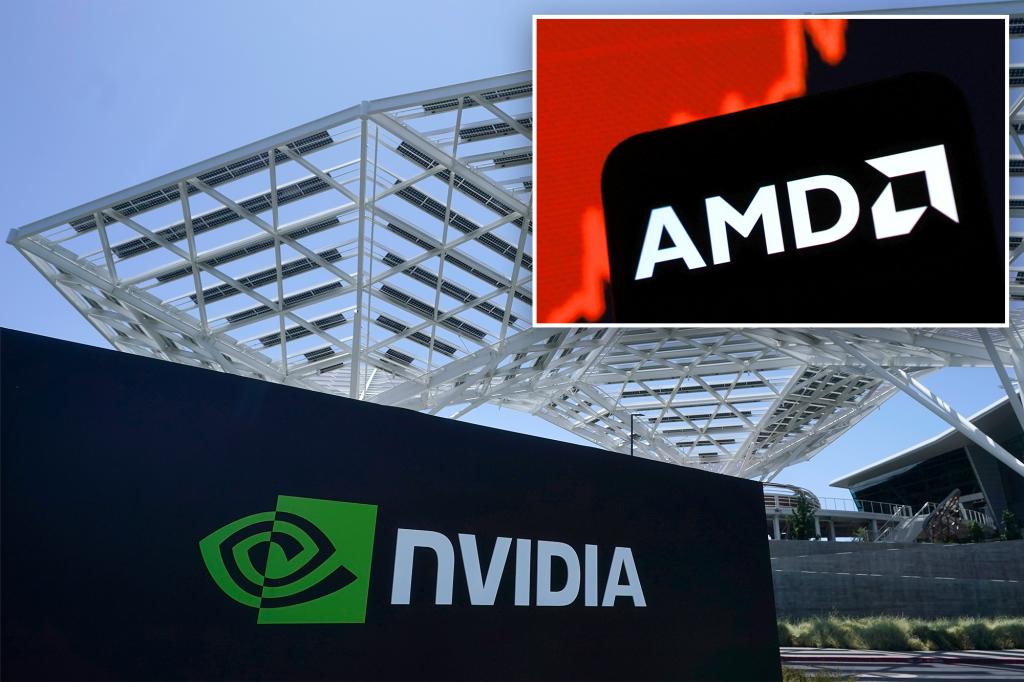News
Nvidia, AMD to pay 15% of China chip sale revenues to US: report

Nvidia and AMD Agree toShare China Sales with US to Secure Export Licenses
In a move that could reshape the global semiconductor landscape, two of the world’s leading chip manufacturers, Nvidia and AMD, have struck a controversial deal with the US government. The agreement, aimed at securing export licenses for their advanced chips, involves yielding a significant portion of their Chinese market revenues. This development underscores the escalating tensions in the tech trade war and its far-reaching implications for both companies and global consumers.
What’s Happening?
Nvidia and AMD have reportedly agreed to cede 15% of their chip sales revenues in China to the US government as part of a deal to obtain export licenses for their advanced semiconductors. This unprecedented arrangement highlights the ongoing US-China tech trade tensions and the strategic importance of the semiconductor industry.
Where Is It Happening?
The agreement impacts the global semiconductor market, with a primary focus on China, a key market for both Nvidia and AMD. The deal was reportedly brokered by the US government, aiming to control the export of advanced technology to China.
When Did It Take Place?
The agreement was reported on Sunday by the Financial Times, although the exact timing of the deal’s execution remains undisclosed.
How Is It Unfolding?
- Nvidia and AMD have agreed to share 15% of their Chinese sales revenues with the US government.
- The revenue share is a condition for obtaining export licenses for their advanced semiconductors.
- The deal underscores the US government’s efforts to control the export of sensitive technology to China.
- This move could potentially impact the profitability and market strategies of both companies.
- The agreement highlights the escalating tensions in the tech trade war between the US and China.
Quick Breakdown
- Companies Involved: Nvidia, AMD
- Revenue Share: 15% of Chinese sales
- Purpose: To secure export licenses for advanced semiconductors
- Impact: Potential effects on profitability and market strategies
- Broader Context: Escalating US-China tech trade tensions
Key Takeaways
This agreement signals a significant shift in the semiconductor industry, reflecting the US government’s assertive stance on controlling technology exports to China. For Nvidia and AMD, the deal may influence their market strategies and profitability. For consumers, it could potentially lead to shifts in chip availability and pricing. The broader implication is a deeper entanglement of geopolitics and technology, with global trade dynamics at stake.
This deal is a bit like sharing your pizza with the principal just to get permission to eat in class. It’s a tricky situation that leaves everyone questioning the trade-offsкантовыYou cannot scan code in the content.
The industry is at a crossroads where geopolitics and technology converge. This deal sets a precedent that could redefine global semiconductor trade dynamics and corporate strategies in the tech sector.
– Jane Thompson, Tech Industry Analyst
Final Thought
The agreement between Nvidia, AMD, and the US government marks a pivotal moment in the tech trade war. It exemplifies the growing complexities of doing business in a globally interconnected yet politically fragmented world. While the deal may ensure compliance with US regulations, it also raises questions about market access and profitability for these tech giants. Consumers worldwide may soon feel the ripple effects, as the semiconductor industry grapples with this new reality.
Source & Credit: https://nypost.com/2025/08/10/business/nvidia-amd-to-pay-15-of-china-chip-sale-revenues-to-us-report/














